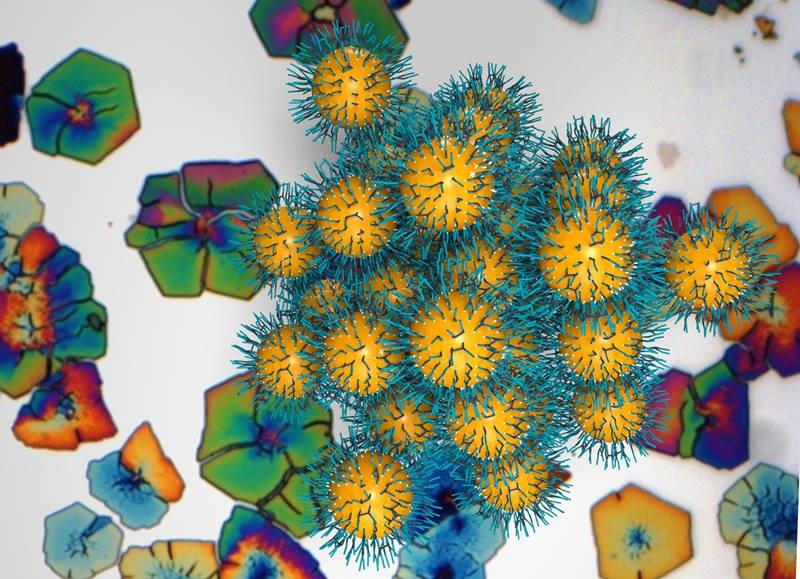The Science
The Impact
Nanoparticle superlattices have many useful properties. These include being able to switch from a metal to an insulator, having molecules that move together at specific frequencies, and forming permanent magnets. These materials may be useful in a number of applications, including sensors and solar cells. This discovery will help scientists better control properties of these superlattices. This knowledge is crucial for scientists to create next-generation materials for energy technologies.
Summary
To explore dynamic processes at the molecular level, faceted NPSL analogues of atomic crystals were synthesized in a toluene solution and characterized using scanning electron microscopy (SEM) at CNM, characterized using in situ small angle X-ray scattering techniques at APS, and modeled using molecular dynamics simulations in part at CNM. The nanoparticle superlattices consist of lead sulfide nanoparticles with capping oleic acid ligands. The results show that ligand coverage density dictates several key factors: the extent of diffusion of ligands over the nanoparticle surfaces, the spatial distribution of the ligands in the interstitial spaces between neighboring nanoparticles, and the fraction of ligands that interdigitate across different nanoparticles. Below a critical coverage density, the nanoparticle superlattices collapse to form disordered aggregates, even under ambient conditions. Above that coverage density, the nanoparticle superlattices surprisingly preserve their crystalline order even under very high applied pressures (∼40–55 GPa). Also, the interparticle spacing decreases with the applied pressure but returns to the original spacing upon pressure release. The combined results suggest the possibility of reversibly manipulating the lattice spacing of nanoparticle superlattices, and in turn, finely tuning their collective electronic, optical, thermo-mechanical, and magnetic properties.
Funding
This research received support from Argonne National Laboratory through a Laboratory Directed Research and Development grant. Use of the Center for Nanoscale Materials and Advanced Photon Source, both Office of Science user facilities, was supported by the U.S. Department of Energy (DOE), Office of Science, Office of Basic Energy Sciences. This research used resources of the National Energy Research Scientific Computing Center and the Argonne Leadership Computing Facility, which are supported by the DOE Office of Science. An award of computer time was provided by the Innovative and Novel Computational Impact on Theory and Experiment (INCITE) program. Additional support came from the GeoSoilEnviroCARS program supported by the National Science Foundation—Earth Sciences and DOE.
Original post https://alertarticles.info




